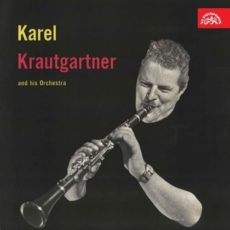
Daily Dose Of Jazz…
Karel Krautgartner was born on July 20, 1922 in Mikulov, Moravia and began to play piano at the age of eight. In 1935, after moving to Brno, he found interest mainly in the radio broadcasting and especially in jazz. He began to study clarinet privately with Stanislav Krtička, acquiring necessary skills and inherited a fanatic passion for clarinet construction and its components.
In 1936 Krautgartner founded the student orchestra Quick Band and six years later signed his first professional contract as a saxophonist in the Gustav Brom Orchestra in the hotel Passage in Brno. In 1943 he gradually created Dixie Club and started to arrange in the Benny Goodman and Glenn Miller styles. During 1945 – 1955, the core of the Dixie Club moved gradually to Prague and became a part of Karel Vlach orchestra. Karel became leader of the saxophone section and started to contributing his own compositions.
1956 saw him founding the Karel Krautgartner Quintet along with Karel Velebný. The group played in various line-ups modern jazz, swing, dixieland and accompanied popular singers. From 1958 to 1960 he performed with the All star band, an orchestra playing in west-coast style, and dixieland with Studio 5. Between 1960 and 1968 he became the head of the Taneční Orchestr Československého Rozhlasu (Dance Orchestra of Czechoslovakia Radio), renamed to Karel Krautgartner Orchestra in 1967.
Following the Soviet invasion of Czechoslovakia, he emigrated to Vienna, Austria in 1968 and became the chief conductor of the 0RF Bigband. Later he moved to Cologne, Germany. Clarinetist, saxophonist, arranger, composer, conductor and teacher Karel Krautgartner passed away on September 20, 1982 in Germany.
#preserving genius
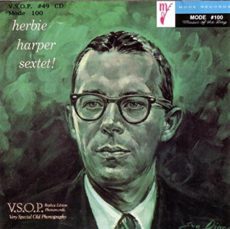
Daily Dose Of Jazz
Herbert Harper was born July 2, 1920 in Salina, Kansas and studied trombone in his youth. He first started playing swing music with Benny Goodman and Charlie Spivak in the 1940s and 1950s. A move to Los Angeles, California saw him working on the West Coast jazz scene and performing with the likes of Stan Kenton, Bill Perkins and Maynard Ferguson, among others.
In 1949, he became a member of the band backing Billie Holiday on her famous Just Jazz radio broadcast for AFRS in Los Angeles. During this period he performed alongside band members trumpeter Neal Hefti, clarinetist and tenor saxophonist Herbie Steward pianist Jimmy Rowles bassist Robert “Iggy” Shevak and drummer Roy “Blinky” Garner.
In 1954, he recorded several sessions as a member of Steve White’s Hollywood-based quartet. As a leader he released his inaugural self titled recording in 1954 and followed up with another trio of albums that same year. With two more during the same decade, Herbie would record again as a leader until the Eighties. He would however record profusely as a sideman with Pete Rugolo and Ferguson.
Trombonist Herbie Harper, who concentrated his playing in the West Coast jazz school, passed away on January 21, 2012.
Sponsored By
www.whatissuitetabu.com
![]()
#preserving genius
More Posts: trombone
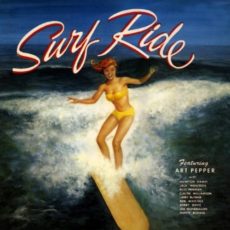
Daily Dose Of Jazz…
Bobby White was born on June 28, 1926 in Chicago, Illinois. He made a name for himself as a drummer in Los Angeles, California beginning in the late 1940s, playing with trombonist Earle Spencer, trumpeter Harry James, saxophonist Charlie Barnett, and bassist Howard Rumsey, among others.
White played with tenor saxophonist Vido Musso from 1951 to 1952, then with alto saxophonist Art Pepper and trumpeter Chet Baker in 1953, and clarinetist Buddy DeFranco in 1954. While a fixture on the West Coast jazz scene in the 1950s , he was still active in the late 1990s, often performing at the Lighthouse, the Hermosa Beach club made famous by Rumsey’s various All-Star aggregations.
In 1999 he participated in a concert tribute to the Lighthouse celebrating the 50th anniversary of Rumsey’s first gig at the club. Retired from music, drummer Bobby White turns 91 this year.
Sponsored By

![]()
#preserving genius
More Posts: drums
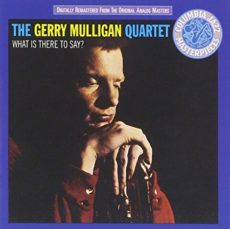
Daily Dose Of Jazz…
Gerry Mulligan was born Gerald Joseph Mulligan on April 6, 1927 in Queens Village, Queens, New York. His father’s career as an engineer moved them frequently through numerous cities and while less than a year old, the family moved to Marion, Ohio. Taking on a nanny to help raise the children, Lily rose became fond of Gerry and he spent time at her home and became enamored with her player piano that had amongst it collection of rolls, Fats Waller. Her home was also a boarding house for Black musicians who came through town giving him the chance to meet them..
During a family move to Kalamazoo, Michigan he took up the clarinet in the Catholic school’s orchestra and made an attempt to arrange the Richard Rodgers song Lover. By 14 he was in Reading, Pennsylvania studying clarinet with dance-band musician Sammy Correnti, who encouraged his arranging. During this period Mulligan began professionally playing the saxophone in dance bands in Philadelphia, Pennsylvania, which was the family’s next move.
He attended the West Philadelphia Catholic High School for Boys, organized a school big band, and wrote arrangements and by 16 was selling arrangements to local radio station WCAU. Dropping out of high school during his senior year he worked with a touring band Tommy Tucker, picking up a $100.00 a week for two or three arrangements.
A move to New York City in 1946 saw Gerry joining the arranging staff on Gene Krupa’s bebop-tinged band pumping out arrangements of Birdhouse, Disc Jockey Jump and How High the Moon” that quoted Charlie Parker’s “Ornithology” as a countermelody. He began arranging for the Claude Thornhill Orchestra, along with Gil Evans and occasionally sitting in as a member of the reed section.
In September 1948, Miles Davis formed a nine-piece band that featured arrangements by Mulligan, Evans and John Lewis that ended up on the Capitol Records album, titled Birth of the Cool. The band initially consisted of Davis on trumpet, Mulligan on baritone saxophone, trombonist Mike Zwerin, alto saxophonist Lee Konitz, Junior Collins on French horn, tubist Bill Barber, pianist John Lewis, bassist Al McKibbon and drummer Max Roach. The Davis nonet has been judged by history as one of the most influential groups in jazz history, creating a sound that, despite its East Coast origins, became known as West Coast Jazz.
Throughout the late Forties and early Fifties he worked with Davis, George Auld, Chubby Jackson and led his debut as a leader with Mulligan Plays Mulligan. By 1952 he was moving to Los Angeles, California and arranging for Stan Kenton and getting a recording contract with Pacific Jazz Records. These sessions enlisted trumpeter Chet Baker as part of his pianoless quartet that included bassist Bob Whitlock and Chico Hamilton on drums.
Valve trombonist Bob Brookmeyer would replace Baker, and Mulligan and Brookmeyer both occasionally play piano, would enlist Jon Eardley, Art Farmer, Zoot Sims, Al Cohn, Lee Konitz and Annie Ross. He performed as a soloist or sideman with Paul Desmond, Duke Ellington, Ben Webster, Johnny Hodges, Jimmy Witherspoon, André Previn, Billie Holiday, Marian McPartland, Louis Armstrong, Count Basie, Stan Getz, Thelonious Monk, Fletcher Henderson, Manny Albam, Quincy Jones, Kai Winding and Dave Brubeck, to name a few. Mulligan appeared in Art Kane’s A Great Day in Harlem portrait of 57 major jazz musicians taken in August 1958.
Gerry appeared in the films Follow That Music, I Want to Live!, Jazz on a Summer’s Day, The Rat Race, The Subterraneans and Bells Are Ringing and wrote music for A Thousand Clowns, Luv, La Menace, and Les Petites galères and I’m Not Rappaport.
Baritone saxophonist, clarinetist, composer and arranger Gerry Mulligan passed away on January 20, 1996 in Darien, Connecticut at the age of 68, following complications from knee surgery. He had won numerous awards not limited to Down Beat Poll Winners, Kennedy Center Honors, and a Grammy Award for Best Jazz Instrumental Performance by a Big Band for Walk on the Water.
Sponsored By
#preserving genius
More Posts: saxophone
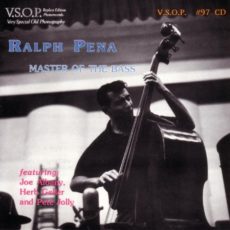
Daily Dose Of Jazz…
Ralph Pena was born February 24, 1927 in Jarbidge, Nevada and started out playing baritone saxophone and tuba before switching to the bass. At age 15 he began playing professionally with Jerry Austin from 1942 to 1944. He went to college in San Francisco and became a fixture in the West Coast jazz scene.
Among his many associations were Nick Esposito, Art Pepper, Vido Musso, Cal Tjader, Billy May, Barney Kessel, Stan Getz, Charlie Barnet, Shorty Rogers, Jimmy Giuffre, Buddy DeFranco, Bob Brookmeyer. In the 1960s, Pena worked with Ben Webster, George Shearing, Frank Sinatra, Joe Pass, Nancy Wilson, Ella Fitzgerald, Anita O’Day and many others. He recorded and released a couple of albums with Pete Jolly between 1958 and 1962.
Bassist Ralph Pena, who lead one record session, he did lead his own groups on an occasional basis before his early death at age 42 on May 20, 1969 in Mexico City, Mexico.
Sponsored By
![]()
#preserving genius
More Posts: bass




